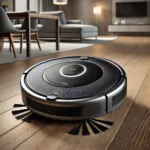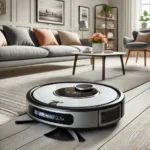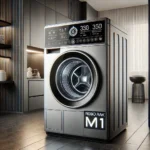Ever wondered what the Robo Rock Cleaner Tax really is? Or whether you’re using genuine cleaner solutions correctly? How about tips for sensor maintenance to prolong your Robo Rock’s life? In this comprehensive guide, we’ll dive into all three topics—giving you expert insights, real examples, and practical steps you can apply today.
Robo Rock Cleaner Tax
The term “Robo Rock Cleaner Tax” might sound confusing at first—especially since it’s not a government levy. Instead, it’s a nickname given by users to refer to the added costs of maintaining and optimizing a Robo Rock vacuum cleaner, including purchasing cleaning agents, replacement parts, and accessories.
What Does the “Cleaner Tax” Really Include?
The Robo Rock Cleaner Tax often refers to:
-
Original cleaner agents recommended by Robo Rock.
-
Microfiber pads and mop cloth replacements.
-
HEPA filters and dustbin components.
-
Water tanks and anti-bacterial solutions.
-
Subscription or premium app functionalities.
-
Extra batteries or charging docks.
-
Shipping or import fees for genuine parts.
-
Local taxes or customs duties on smart home tech.
These hidden costs add up, and many users overlook them during purchase.
Real-World Example: My Experience with the S7 MaxV
After buying the S7 MaxV, I thought I’d be set for at least a year. But within six months, I had to:
-
Replace the mop cloth twice.
-
Buy a new detergent that wouldn’t damage the sensors.
-
Purchase a backup water tank for convenience.
Total? Around $85. That’s the “tax” people are talking about.
Why It Matters
Failing to consider the cleaner tax can result in:
-
Reduced cleaning efficiency.
-
Damage from non-genuine solutions.
-
Frequent sensor malfunctions.
Understanding this upfront lets users budget smartly and protect their investment.
👉”Search for Robo Rock Cleaner Tax details”👈
Robo Rock Cleaner Tax Genuine
You’ve likely seen cheaper, off-brand alternatives online. But are they worth it?
Let’s dive into what makes a Robo Rock cleaning product “genuine”, and why it can be critical to use them.
How to Spot Genuine Cleaner Products
Look for these tell-tale signs:
-
Robo Rock branding on the bottle or packaging.
-
QR codes leading to official verification pages.
-
Listed on official stores (Amazon, Robo Rock website, or verified retailers).
-
Fragrance-free and streak-free formulas.
-
Compatibility label (e.g., for S5, S6, S7 models).
-
Transparent ingredients list.
-
Batch number and manufacturing date.
-
Customer reviews confirming efficacy.
Case Study: What Happened When I Used a Generic Cleaner
Out of curiosity, I tried a cheaper, non-branded cleaning fluid on my S7. Within a week:
-
The robot started misreading obstacles.
-
The mop left streaks across wooden flooring.
-
I had to reset and clean the entire sensor array manually.
Lesson learned: the $10 saved wasn’t worth the $40 repair cost.
Insider Tip
Many genuine cleaners are concentrated. That means one bottle, used properly, can last 3-4 months—making them more cost-effective than they appear.
👉”Find Genuine Robo Rock Cleaning Products”👈
Robo Rock Sensor Cleaning
The sensor is the heart of the vacuum—responsible for detecting furniture, cliffs, carpets, and dirt. Dirty sensors = confused robot.
Best Practices for Sensor Cleaning
Here’s a checklist I swear by:
-
Turn off the robot before maintenance.
-
Use a soft microfiber cloth—no abrasives.
-
Dampen cloth slightly with sensor-safe solution.
-
Clean around the LDS laser, cliff sensors, and wall sensors.
-
Wipe gently—no pressure.
-
Let the cleaner air dry for 5–10 minutes before restarting.
-
Perform a quick system test afterward.
Cleaning Frequency Guide
| Usage Level | Cleaning Frequency |
|---|---|
| Light (2x/week) | Once a month |
| Medium (daily) | Every 2–3 weeks |
| Heavy (pets, large homes) | Weekly |
Example: My Pet-Filled Apartment
With two dogs at home, my Robo Rock runs twice daily. I noticed performance dropped after a month—turns out, dog hair and dust had blocked the cliff sensors. Regular weekly cleaning now keeps it running like new.
The Future: Auto-Cleaning Tech?
Newer models are experimenting with self-cleaning sensor systems using ultrasonic vibrations. But for now, manual maintenance is still the gold standard.
👉”Learn Sensor Cleaning Techniques”👈
Conclusion
As the saying goes, “Take care of your tools, and they’ll take care of you.” The Robo Rock Cleaner Tax isn’t just about extra costs—it’s about understanding what’s needed to keep your device at peak performance. From choosing genuine products to keeping your sensors clean, smart care leads to longer life and cleaner floors.
Whether you’re a new user or a seasoned Robo Rock pro, remembering these three keys—Cleaner Tax, Genuine Products, and Sensor Maintenance—can save you time, money, and headaches.






